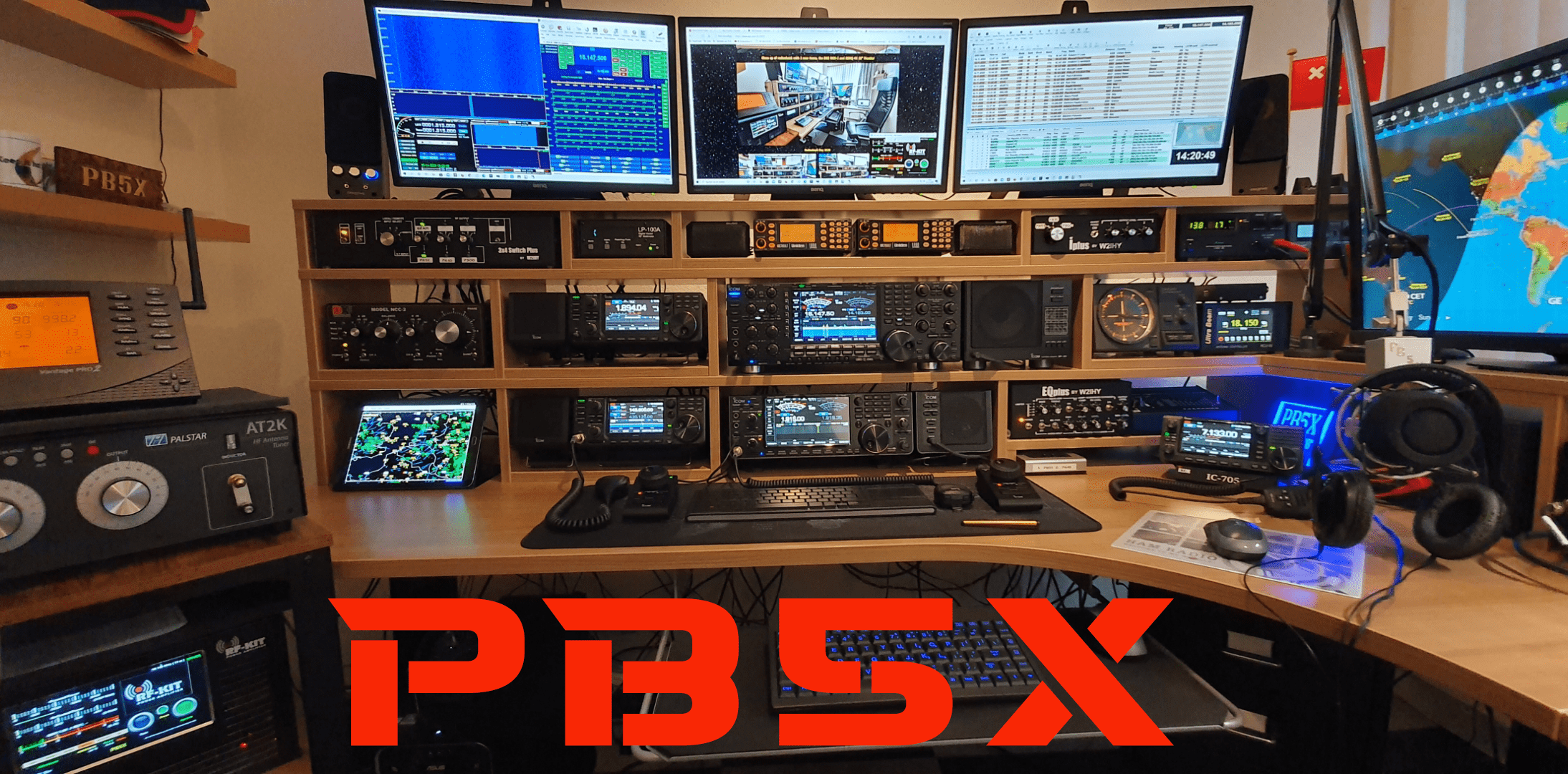
Last year November 2020 I decided to increase my frequency spectrum as I normally always operated at 10-40 mtr but never at 80 mtr. One of the reasons I never used the 80m band had to do with the limitations of installing a suitable antenna for that band. After surfing the World Wide Web and knowing the website of PA0FRI,, my eye fell on the principle of the ZS6BKW antenna. After contacting Frits PA0FRI and discussing my situation, he agreed with me that the best option with my QTH would be that ZS6BKW antenna. That in my case meant I would be able to hang 2 x 15mtr (2 x 45Ft) with a 10mtr (30Ft) open transmission line in an inverted V fashion. After ordering some robust, strong and powerful antenna wire (DX WIRE FS-2) with some spreaders, I started building the antenna.
Of course, building the antenna was part of the story, because in order for this antenna to function properly, it had to be tuned. Within my station, I had the option of using the built-in antenna tuner that comes with the solid-state amplifier. But the ratio of this tuner has its limitations. That’s why I decided to order a Palstar AT2K manual antenna tuner. During Christmas the antenna was built and I could finally experiment at 80Mtr.

Palstar AT2K T-match Tuner
A new world opened up with short skip propagation, which meant that I was able to reach more stations from my country within a distance of 100-250 Km, which I normally only experience at 40mtr with the right propagation. In addition to the short range, I have been working into the US within the DX window of the 80mtr band. Working a US stationis of course nothing special as I do that continuously at 20 mtr and 17 mtr, but doing it through a piece of Wire vs a Yagi is of course something else. So all in all the idea I had envisioned paid off and I was happy that my 80 mtr project was a success.
After using this antenna configuration with the Manuel Tuner I decided it was time for the next step. One of the reasons for going to the next step is that I’m getting lazy with continuous manual tuning. Of course I had made a Tuning table for fixed frequencies so that I could immediately tune the antenna to a specific frequency. But it wasn’t the same, especially if I heard some stations on a certain frequency, I always had to manually retune, which took time and effort.
So what else…? Since I was quite satisfied with the construction of the Palstar tuner, my attention was drawn to the PALSTAR HF AUTO tuner. After watching several YouTube clips, the decision was quickly made. Since the last 2 weeks I have been able to play with this HF AUTO tuner and as advertised, this Tuner is great. After setting up the tuner, the Autostore does the rest and remembers all the frequencies you entered. In addition to Auto Tuning, I had another criterion and that was power. This HF AUTO has a power of 1,800 Watts on HF, which in my case is more than sufficient as I never use that much power.
Conclusion: After having an idea to increase my frequency spectrum, add an antenna and explore the possibilities on manual and AUTO tuners, I can honestly say that I am quite satisfied with the result of the various experiments performed.
If you would like to know more about this topic please do not hestitate to drop me an email at roma-dx@ziggo.nl or just use the CONTACT form on this webpage.
73 Roberto PB5X
